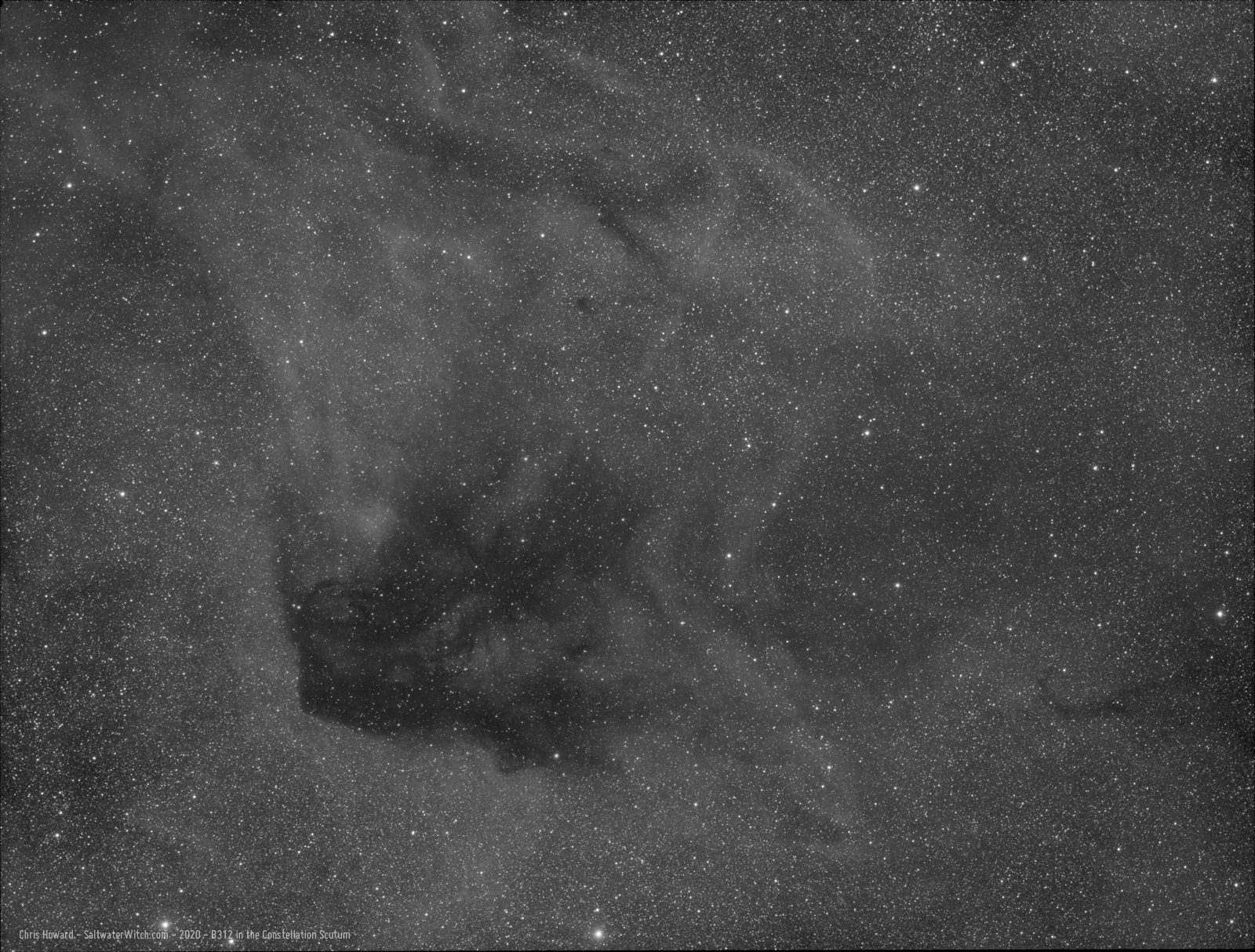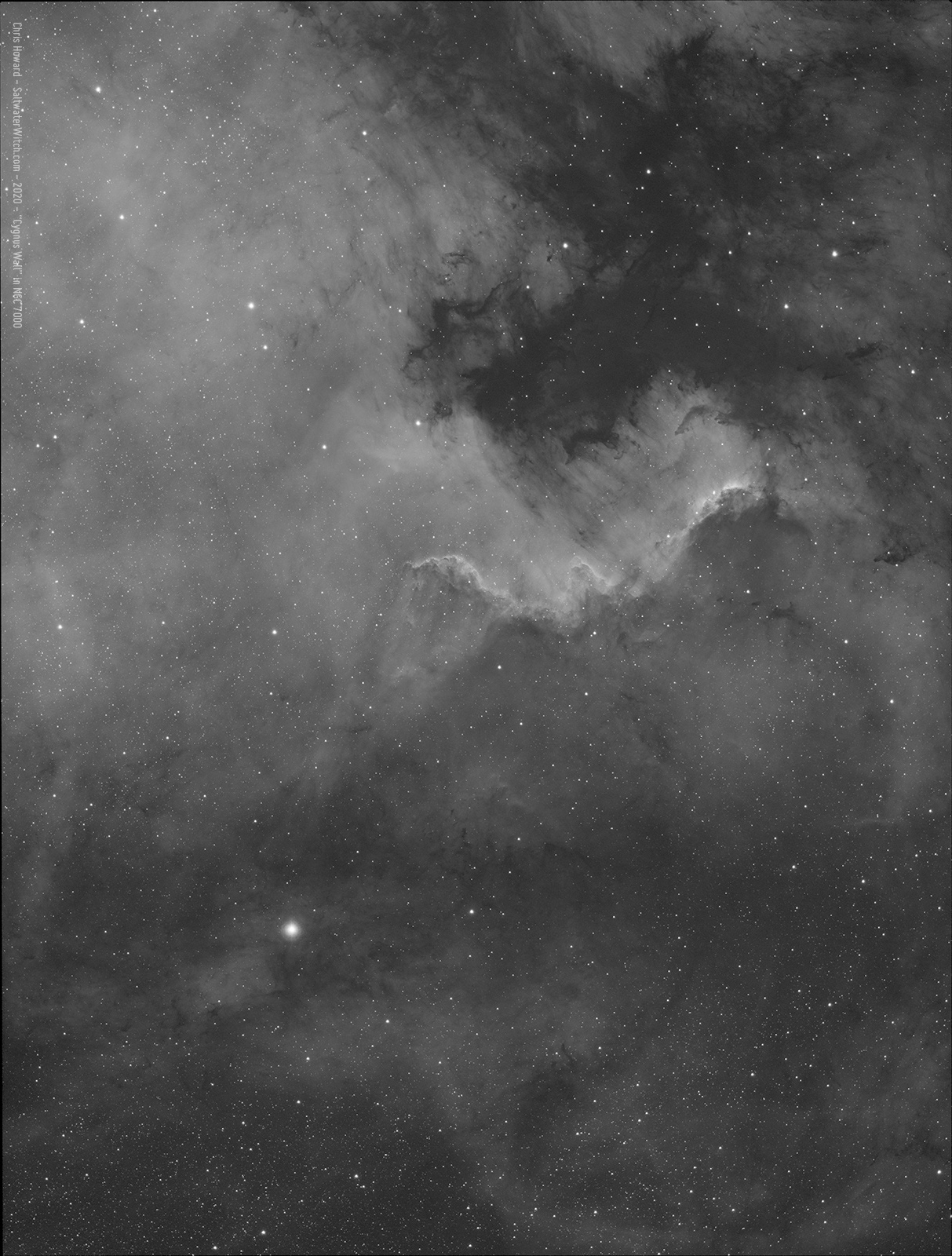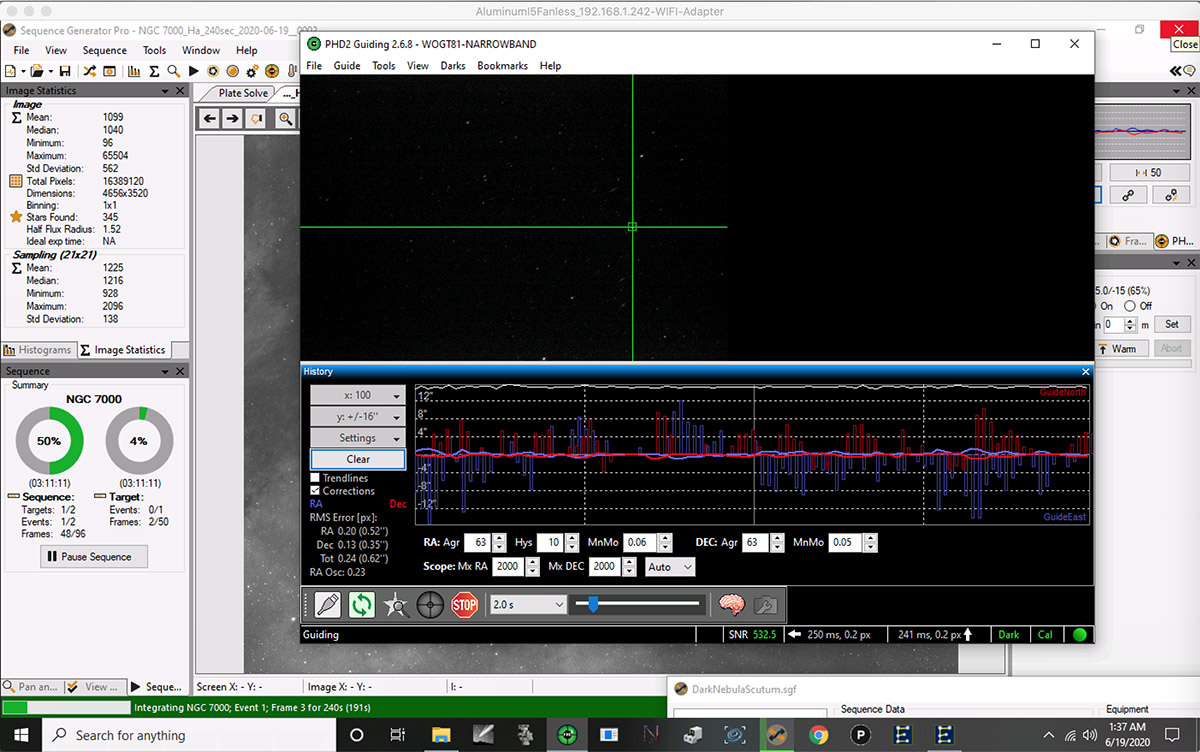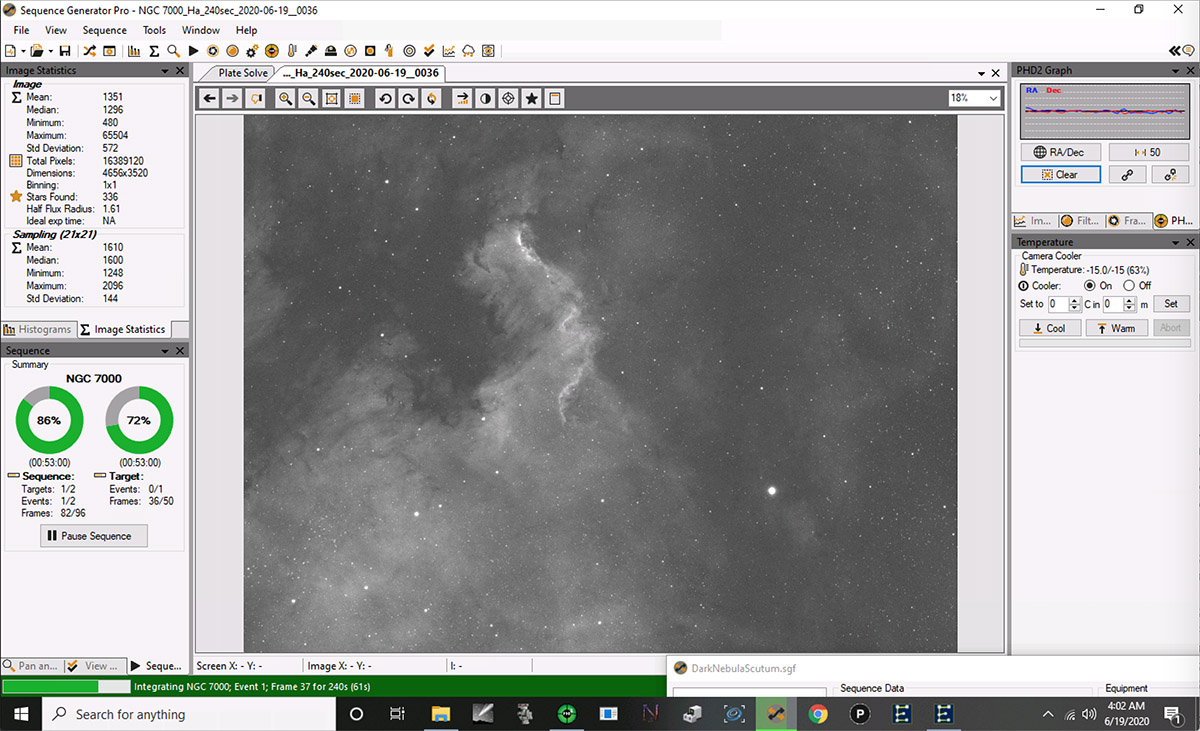Narrowband imaging run with the GT81 and Sky-Watcher EQ6-R Pro
June 19, 2020
Have you ever been framing in SGP or browsing Telescopius for Messier 16, the Eagle Nebula or M17, the Swan Nebula, and looked over and saw that totally creepy arrow-shaped dark nebula--and thought, I want to take pics of that? Well, that's B312. Let's get started!
Okay, I'm back with the fully operational* William Optics GT81 and Moonlite focuser setup, with the flat field and focal reducer spacing much closer to spectacular than it was yesterday, and my first astro-imaging target for the night is B312 in the Constellation Scutum. That's Barnard 312 from the classic Barnard Catalogue of Dark Markings in the Sky. Yes, that is the actual full title, although it's usually shortened to "The Barnard Catalogue". I have had my eye on B312 for a while. It's this beautiful arrow shape of interstellar dust twisting through the dense starfield where Scutum edges up against Serpens and Sagittarius, just out from the Milky Way core. B312 is thought to be made up of rapidly condensing clouds of molecular hydrogen (H2) that will in the near future become a star-forming region. Cool. I'm not holding my breath. How near into the future is relative, but you'll be on the right track if you think in terms of galactic time scales. Here in New Hampshire time moves a little slower and B312 is very low in the south, never rising above 32 degrees or so. I can only capture it east of the meridian, so I don't have a lot of time before the earth rotates it behind trees and transmission lines. And guiding that far south, just above the horizon, is always trouble, doesn't matter which mount I use. Right now in PHD2, I'm happy with a 1.25 arcsecond total RMS. I will just have to enjoy the far south nebula time while I can, and deal with it in post, as they say. Notes: 36 x 240-second Ha sub-exposures stacked in DeepSkyStacker, processed in PSCC2020.
* the scope was fine, but I had dismantled everything and returned it to it's default position--original focuser, with the 90mm tube rings and vixen dovetail bar. By "fully operational" I mean I went back to the config with the Moonlite focuser.

Much better guiding and clearer skies heading toward the zenith with the North America Nebula. Here's a processed stack of 41 x 4-minute hydrogen-alpha subs of the "Cygnus Wall" in NGC7000. A lot of signal, not a lot of noise, and those gradients of ionized interstellar hydrogen are "like buttah" they're so smooth. Still not happy with the stars, but have to wait for the next clear night to correct--could be the OAG. Check out the full image: https://SaltwaterWitch.com/img/NGC7000_Ha_ChrisHoward_20200619_04.jpg That's the full downscaled JPG at 1600 x 1213, not the full sized version of this image, which has a resolution of 14000 x 10618 px. Imaging notes: William Optics GT81 Apochromatic refractor--an amazing piece of hardware, Astronomik 6-nanometer hydrogen-alpha filter, ZWO ASI1600MM-Pro monochrome camera, QHY 5iii178 guide camera, Sky-Watcher EQ6-R Pro Mount.

These two images of B312 and NGC7000 are uncropped, and you can see the darker edges where I dithered every three frames. I almost always use drizzle when processing--"drizzle" doubles or triples the resolution of an image using variable-pixel linear reconstruction that preserves photometry and detail, and especially works well if you're undersampling. I'm a bit under with 2.05 arcseconds/pixel with the ASI1600 camera and William Optics GT81, but I still use drizzle in DeepSkyStacker. The drizzle algorithm was originally developed for the Hubble Deep Field observation data, but it's now pretty common in astro-imaging applications.
A couple shots from the NGC7000 sequence. I'm really happy with the tracking and guiding on the Sky-Watcher. These are pretty decent numbers for the mount's location--on the shifting timbers of our back deck.


And the video that goes along with this post--check out my Youtube channel for more videos:
